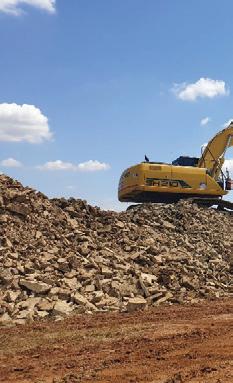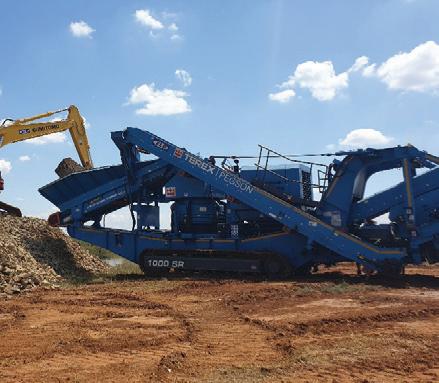
3 minute read
Finding a way forward for recycled building material


Robust debate is needed in the construction industry to map a way forward for the recycling of demolition material on construction sites.
Surface mining industry association ASPASA says there is much talk about the recycling of building material, but little research or planning has been done to plot a way forward. Although recycling is a good idea in principle, complexities exist that will need to be resolved before industry-wide recycling will be viable.
ASPASA director Nico Pienaar says it will need close co-operation between all parties concerned to be successful. This must include the civil engineering fraternity, which will be required to compile standards for recycled aggregates and quarries, which have the equipment required to crush and screen material, as well as the demolition industry and recycling experts, who will need to apply certain processes to prevent contamination of the material.
Separation challenge
“Recycling of building material for any other purpose than backfill is a complex business. It requires complete separation of materials such as clay bricks, steel, glass, wood and other construction materials in order to guarantee the strength and durability of structures built with recycled constituents. “This kind of separation has its own challenges and will require specialised equipment that’s able to deal with foreign objects such as metals, rubber and fines. Then there’s the matter of identifying possible contaminants such as oils, chemicals, corrosives and others that may weaken concrete or lead to its degradation in years to come.
“Perhaps more significant is the correct grading of recycled materials that will change from load to load and construction site to construction site. It may even be necessary to have a new breed of specifiers who’re qualified in the assessment of structures to be demolished and paths for the recycling and grading of their materials. These kinds of interventions will take time to plan and implement before the industry can move forward,” says Pienaar.
Finding direction
He adds that successful projects are already in operation in other parts of the world where incentives exist and legislation requires the use of a certain percentage of recycled materials. In many instances, these operations are run inside existing quarries where equipment and routes to market already exist.
However, without similar market requirements and incentives, the recycling of building rubble may prove to be too costly or specialised for the local market to grasp. SA has an abundance of suitable sands and aggregates and price-driven
(Above): Nico Pienaar of ASPASA
(Above left): A typical construction material recycling operation. market forces are likely to render recycled materials uncompetitive.
Even if a successful industry is launched, the market in even the most advanced recycling countries is only about a 20% substitution and the construction industry will still need to be supported by a strong, healthy and profitable quarrying industry.
Conversely, if the industry wants to use building rubble as backfill or on certain non-load-bearing applications, then the industry may be sufficiently simplified to allow widespread use of construction materials.



Legal route
“New legislation regarding the use of recycled materials will need to be devised, as will permitting and standards need to be introduced to ensure quality construction in future. Water usage rights, land rights, the disposal of waste products, safety and health issues and a host of other challenges will also need to be hammered out. However, the longer we leave the issue and soapbox about the virtues of recycling construction materials, the longer the industry will remain in limbo.
“We therefore encourage other government and professional bodies, companies and individuals to make contact with us to begin setting up the process of establishing a forum to drive the way forward. With space running out in the country’s landfills, the time to act is now,” says Pienaar.










